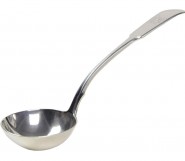Lot #28 - George Russell Drysdale
-
Auction House:Mossgreen
-
Sale Name:The Barry & Anne Pang Collection
-
Sale Date:18 Oct 2015 ~ 2.30pm
-
Lot #:28
-
Lot Description:George Russell Drysdale
(1912-1981)
The Aeroplane c.1949
oil on canvas
49.5 x 59.5 cm
signed lower right: Russell Drysdale; inscribed verso: The Aeroplane - Russell Drysdale C/o LEISTER GALLERIES 22A CORK STREET, LONDON N1 -
Provenance:James R. Lawson's, Australian Paintings, Sydney, 24 October 1978, lot 22; Savill Galleries, Sydney; Mr Basil Sellers AM, Sydney; Purchased from the above in 1988
-
Exhibited:Paintings, Drawings and Watercolours by Sir Russell Drysdale, Leicester Galleries, 22A Cork Street, London W1, 16 June - 15 July 1972, cat. 26.; Spring exhibition 1977: Recent Acquisitions, Joseph Brown Gallery, Melbourne, 19 October - 3 November 1977, cat. 90.
-
References:Russell Drysdale's Australia, Ure Smith, Sydney, 1974, illus. p. 39; Wonder of Childhood: The 1975 UNICEF calendar, New York: United Nations, 1974
-
Notes:In an interview in 1960, Russell Drysdale commented that Australia Ôis very ancient land, and its forms and its general psychology are so intriguing as compared to the other countries of the world that it in itself is surprising.'1 In the preceding decades, the artist had already created a series of images which forever changed the Australian city-dweller's perception of those people who inhabited its interior. These were men and women who endured the harsh life, standing stoically in the face of adversity year after year, living by frugal means and wit. Drysdale was lauded as the country's leading artist and in 1949, met the eminent English art historian Kenneth Clarke when he visited Sydney. Clarke promptly purchased Drysdale's painting The Councillor's House and urged him to exhibit in London. He was then instrumental in encouraging the prestigious Leicester Galleries to offer the artist a solo show in 1950. What followed was a major frenzy of sketching and painting as Drysdale developed ideas for the exhibition amidst the daily pressures of his employment duties, family life and travels. In that same year, he had been appointed Director for Pioneer Sugar which meant a relocation to far-north Queensland. This move was inspirational in giving him Ôa greater breadth of vision with its clearer skies and endless land É (providing) a sudden feeling of open-hearted enthusiasm for the breadth and variety of the Australian landscape.'2 The aeroplane dates from these months and is significantly different from Drysdale's other contemporaneous paintings in that it has children as its focus, rather than their parents or custodians. Drysdale had glanced this way earlier with his masterwork The cricketers 1948, showing three youths, a bat, a ball and bugger-all else, but he stripped this back even further in The aeroplane to depict three children on a beam that appears to have survived the same conflagration which twisted the corrugated iron at either end into weird surreal shapes. What is elemental to this image is that the children are engaged in imaginative play, making do with the barest of props. They need only detritus and their imagination to fly high above their country. The scene may also be experienced as a stage set. This is not surprising as Drysdale was a studio-bound painter where he Ôwould arrange the image or subject in the same manner as a director arranges his mise-en-scne. The economy of Drysdale's work and the concentration on a few figures shows the same effective focus as a well-directed play.'3 Although The aeroplane did not make it to the Leicester Galleries exhibition (the show having been truncated from 35 to 25 paintings) it had thematic companions in Country School Children, Children in a bath (where the bath resides on a rubbish tip and has now become a ship in the children's minds), and Children Dancing, in which the children have no props at all, dancing instead to the simple sound of their own singing. ÔPerhaps it is the strange combination of fragility and toughness in children that appeals to him; he certainly conveys it. (Their improvisation) reflects the same quality of adaptation to environment that Drysdale admires, with their imagination providing an extra stimulus, so that his children are often dancing or playing where his grown-ups are serious and stock-still.'4 1 Russell Drysdale, interview with Hazel de Berg, National Library of Australia, 1960, tape 27. 2 Lou Klepac, The Life and Work of Russell Drysdale, Bay Books, Sydney, 1983, p.118 3 Patrick McCaughey, Strange Country: why Australian painting matters, Miegunyah Press, Melbourne, 2014, p.149 4 Geoffrey Dutton, Russell Drysdale, Thames and Hudson, London, 1969 (revised edition), p.89
-
Estimate:A$380,000 - 480,000
-
Realised Price:
-
Category:Art
This Sale has been held and this item is no longer available. Details are provided for information purposes only.










